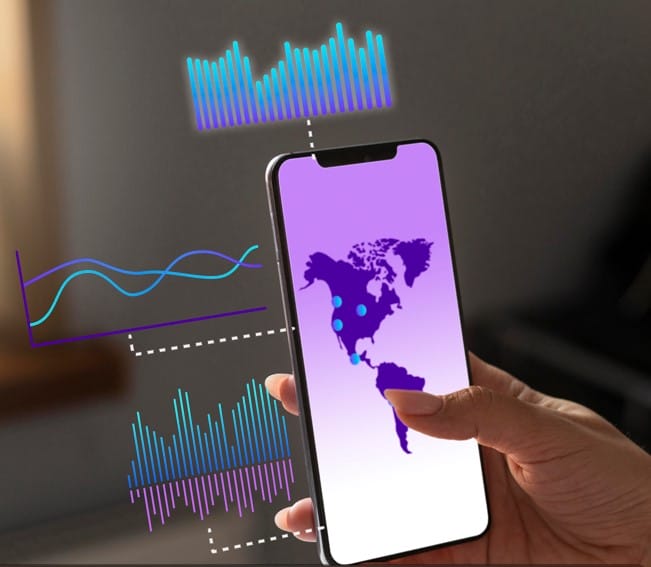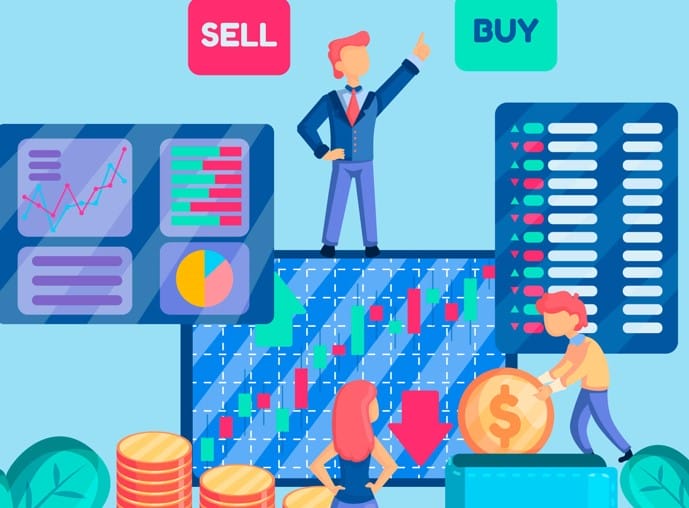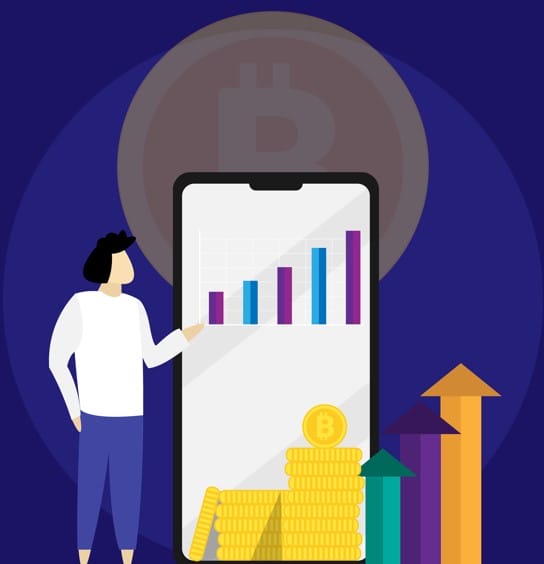The world of foreign exchange (Forex) trading has undergone a significant transformation in recent decades, thanks to the rapid advancement of technology. Forex trading, once confined to the realm of financial institutions and large corporations, has become accessible to individual traders around the globe. This accessibility is largely due to the democratization of technology, which has enabled traders to leverage a wide range of tools and resources to enhance their trading strategies and decision-making processes.
In this comprehensive guide, we will explore how modern technology has revolutionized Forex trading and how traders can capitalize on these advancements to amplify the benefits of participating in the Forex market. We will delve into various aspects of technology-driven trading, including automated trading systems, algorithmic trading, data analysis, mobile trading platforms, and risk management tools. By the end of this guide, you will have a deep understanding of how technology empowers Forex traders and the strategies you can employ to maximize your success in this dynamic market.

1. Early Forex Trading
Early Forex trading refers to the initial stages of the foreign exchange market when trading activities were conducted in a manual and rudimentary manner. During this period, which extends back several decades, Forex trading was largely limited to financial institutions, central banks, multinational corporations, and high-net-worth individuals. The key characteristics of early Forex trading included:
- Manual Processes: Forex trading was predominantly conducted through manual processes, which involved human traders physically executing trades. These traders relied on phones, faxes, and other traditional communication methods to place orders.
- Limited Access to Real-Time Data: Traders had limited access to real-time market data. Information about currency exchange rates and economic indicators often arrived through delayed channels, making it challenging to make timely trading decisions.
- News and Fundamental Analysis: Traders heavily depended on news sources and fundamental analysis to make trading decisions. Economic reports, geopolitical events, and government policies played a crucial role in influencing currency values.
- Human Judgment: Trading decisions were primarily based on human expertise and intuition. Traders analyzed information and relied on their judgment to speculate on currency movements.
Significance: Understanding the early days of Forex trading is crucial because it highlights the stark differences between traditional and modern trading practices. It provides the context for appreciating the impact of technology on the industry. In this historical context, it becomes evident how the evolution of Forex trading from manual processes to the use of technology has drastically transformed the landscape, making trading more accessible and efficient for a broader range of participants.
The shift from manual trading to electronic trading marked a significant turning point in the industry, setting the stage for further advancements and the eventual democratization of Forex trading. As technology continued to evolve, it paved the way for retail traders to enter the market, leading to the rise of online trading platforms and algorithmic trading strategies.
2. The Technological Revolution
“The Technological Revolution” in the context of Forex trading refers to a pivotal period marked by significant advancements in technology that transformed the industry. This revolution had a profound impact on how Forex markets operated, the speed at which trades were executed, and the accessibility of market data. Key elements of this technological revolution included:
- Electronic Trading Platforms: The introduction of electronic trading platforms was a game-changer. These platforms, such as Reuters Dealing and EBS (Electronic Brokering Services), allowed traders to execute trades electronically, eliminating the need for manual processes like phone-based trading.
- Faster Execution: Electronic trading platforms facilitated faster order execution. Trades could now be executed in milliseconds, enabling traders to respond swiftly to changing market conditions and opportunities.
- Real-Time Market Data: Traders gained access to real-time market data, including live currency exchange rates, bid-ask spreads, and transaction volumes. This real-time information was crucial for making informed trading decisions.
- Increased Transparency: The transition to electronic trading platforms increased transparency in the Forex market. Market participants could see live prices and the depth of the market, enhancing their ability to assess market dynamics.
- Global Connectivity: Technology allowed traders from around the world to connect to Forex markets. This globalization expanded market liquidity and increased the diversity of market participants.
Significance: The technological revolution was a watershed moment in the history of Forex trading. It marked a shift from the limitations of manual trading to the efficiency and accessibility of electronic trading. Several significant implications arise from this revolution:
- Efficiency: Electronic trading platforms made Forex trading more efficient by reducing the time it took to execute trades. This speed was crucial for capitalizing on short-term market movements.
- Accessibility: The adoption of technology democratized Forex trading. It was no longer the exclusive domain of large financial institutions. Smaller traders and retail investors could now access the market easily.
- Market Transparency: Real-time market data and increased transparency improved decision-making. Traders could base their strategies on up-to-the-minute information, reducing the element of uncertainty.
- Globalization: The globalization of Forex trading increased market liquidity and offered traders opportunities in various time zones. Forex markets became truly 24-hour, five-day-a-week markets.
- Innovation: The technological revolution laid the foundation for further innovation in Forex trading, including the development of algorithmic trading, mobile trading, and advanced risk management tools.
3. The Rise of Retail Forex Trading
“The Rise of Retail Forex Trading” represents a pivotal shift in the Forex market landscape. During this phase, the market saw the emergence and growth of retail Forex trading, which made it accessible to individual traders and investors. Key characteristics and developments associated with the rise of retail Forex trading include:
- Online Brokerages: Online brokerages, often referred to as Forex brokers, began offering trading services to retail clients. These brokers provided online platforms that allowed individual traders to access the Forex market.
- User-Friendly Trading Platforms: Retail Forex brokers introduced user-friendly and intuitive trading platforms. These platforms made it easier for non-professional traders to enter the market, execute trades, and manage their portfolios.
- Lower Capital Requirements: Retail Forex trading reduced the minimum capital requirements for participation. Unlike traditional Forex trading, which often required significant capital, retail traders could open accounts with smaller initial deposits.
- Leverage and Margin Trading: Retail Forex brokers offered leverage, allowing traders to control larger positions with a relatively small amount of capital. While this amplified profit potential, it also introduced higher risk.
- Educational Resources: To attract and support retail traders, brokers provided educational resources, including webinars, tutorials, and demo accounts. These resources helped traders learn about the Forex market and develop trading skills.
- Access to Multiple Currency Pairs: Retail traders gained access to a wide range of currency pairs, allowing them to diversify their portfolios and trade based on various economic and geopolitical factors.
Significance: The rise of retail Forex trading had profound implications for the Forex market and individual traders:
- Democratization of Forex: The most significant impact was the democratization of Forex trading. It shifted the market from being dominated by large financial institutions to being accessible to individuals with varying levels of experience and capital.
- Accessibility: Retail Forex trading made it possible for people worldwide to engage in Forex trading from the comfort of their homes. All that was required was an internet connection and a trading account.
- Increased Trading Volume: The influx of retail traders significantly increased trading volumes in the Forex market. This increased liquidity and offered more trading opportunities.
- Competition and Innovation: The rise of retail trading encouraged competition among Forex brokers, leading to innovation in trading platforms, tools, and services. Traders benefited from a wider range of choices.
- Risk and Education: Retail Forex trading brought both opportunities and risks. The availability of leverage, while potentially profitable, also increased the risk of significant losses. Educational resources helped traders better understand these risks and manage them effectively.
4. Features of Mobile Trading Platforms
“Features of Mobile Trading Platforms” explores the functionalities and capabilities offered by modern mobile applications designed for Forex trading. These mobile trading platforms enable traders to access the Forex market and manage their positions from mobile devices such as smartphones and tablets. Key aspects of this section include:
- Real-Time Price Quotes and Charts: Mobile trading platforms provide real-time price quotes for currency pairs and other financial instruments. Traders can view live market data, including bid-ask spreads, in the form of interactive charts.
- Order Execution and Management: Traders can execute market orders, limit orders, and stop orders directly from their mobile devices. They can also monitor and manage their open positions, set take-profit and stop-loss orders, and modify or close trades.
- Access to Account Information: These platforms offer access to important account information, including account balances, margin levels, trading history, and transaction records. This information is crucial for risk management and portfolio monitoring.
- Alerts and Notifications: Mobile trading apps allow users to set up alerts and notifications for price movements, news events, or specific trading conditions. These alerts can be sent via push notifications, emails, or SMS, keeping traders informed about market developments.
- Research and News Updates: Some mobile trading platforms provide access to market research, economic calendars, and news feeds. Traders can stay informed about important events and economic indicators that may impact currency markets.
Significance: Understanding the features of mobile trading platforms is essential for traders who seek flexibility and convenience in their Forex trading activities. Here’s why these features are significant:
- Accessibility: Mobile trading platforms offer traders the ability to access the Forex market from virtually anywhere with an internet connection. This accessibility means traders can react to market events and execute trades in real-time, even when away from their desktop computers.
- Convenience: The user-friendly interfaces and intuitive designs of mobile trading apps make trading more convenient. Traders can manage their positions, monitor market conditions, and execute trades with ease, regardless of their location.
- Timeliness: Real-time price quotes and notifications ensure that traders can react swiftly to market movements and emerging opportunities. Mobile apps provide traders with up-to-the-minute information.
- Diversification: Mobile trading platforms typically offer access to a wide range of currency pairs and other financial instruments, allowing traders to diversify their portfolios and explore various trading strategies.
- Efficiency: Traders can take advantage of spare moments during the day to make trading decisions and manage their positions. This efficiency can be especially valuable for active traders who want to stay engaged with the market.
Conclusion
The integration of technology into Forex trading has revolutionized the landscape, offering traders an array of powerful tools and resources. From algorithmic trading systems that enhance precision and speed to mobile platforms providing accessibility and flexibility, technology has democratized the Forex market. Comprehensive data analysis, risk management tools like stop-loss orders, and the rise of retail trading have collectively amplified the benefits of being a Forex trader. Embracing these modern tools empowers traders to make informed decisions, manage risk effectively, and participate in a dynamic global market that was once the exclusive domain of financial institutions.
Don’t trade all the time, trade forex only at the confirmed trade setups.
Get more confirmed trade setups here: forexgdp.com/buy/



